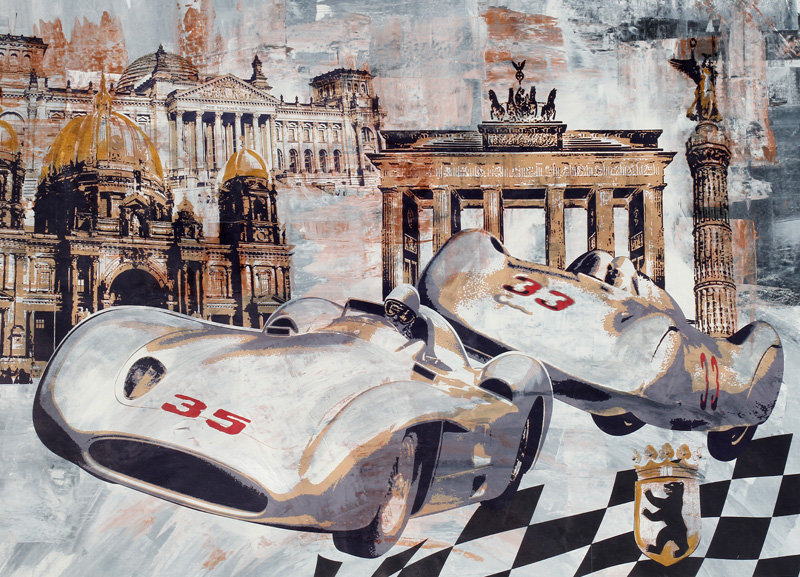MixedMedia / Acrylic on Canvas
on 1.8” / 45 mm Wooden Museum Frame
63” x 43” / 160 x 110 cm













MixedMedia / Acrylic on Canvas
on 1.8” / 45 mm Wooden Museum Frame
63” x 43” / 160 x 110 cm
For many decades, the AVUS (Automobil-Verkehrs- und Übungsstrasse) was, in common with the Brandenburg Gate, the Siegessäule (Victory Column) and the Berliner Dom (Berlin Cathedral), one of the most important attractions in Berlin.
To make up for the deficits in German automobile engineering, Kaiser Wilhelm II commissioned the AVUS at the beginning of the 20th century – the first motor racing track in Germany. A high-speed course, consisting in essence of two straights and two curves, it was known and feared for its high speed and bumpy surface. With practically no run-off areas, spectacular accidents were a regular occurrence. Berlin was unparalleled as a major centre of motorsport. There were stands for spectators along the course, picnics were enjoyed in Grunewald and the entire city was on the move.
Closely fought head-to-head races were contested between Mercedes and Auto Union in the 1930’s, enthralling crowds of more than 300,000. Both manufacturers vied with each other for records and racing wins in fully clad streamlined vehicles. The steeply banked north curve became known as a murder curve, and maximum excitement was guaranteed. The north curve of the 19 kilometre long circuit was replaced in 1937 by a steep brick banking of 43.6°.
Following the Second World War, the first race was held again in 1951. The north curve was demolished in 1967 following several fatalaccidents in the 1950’s and 60’s.